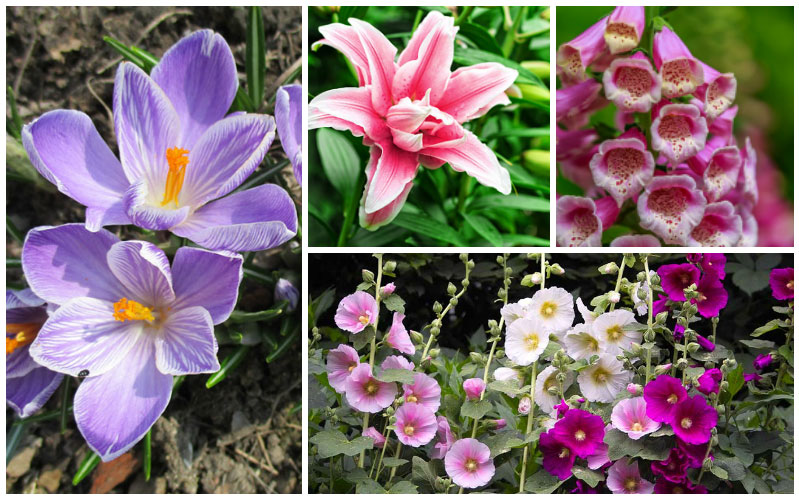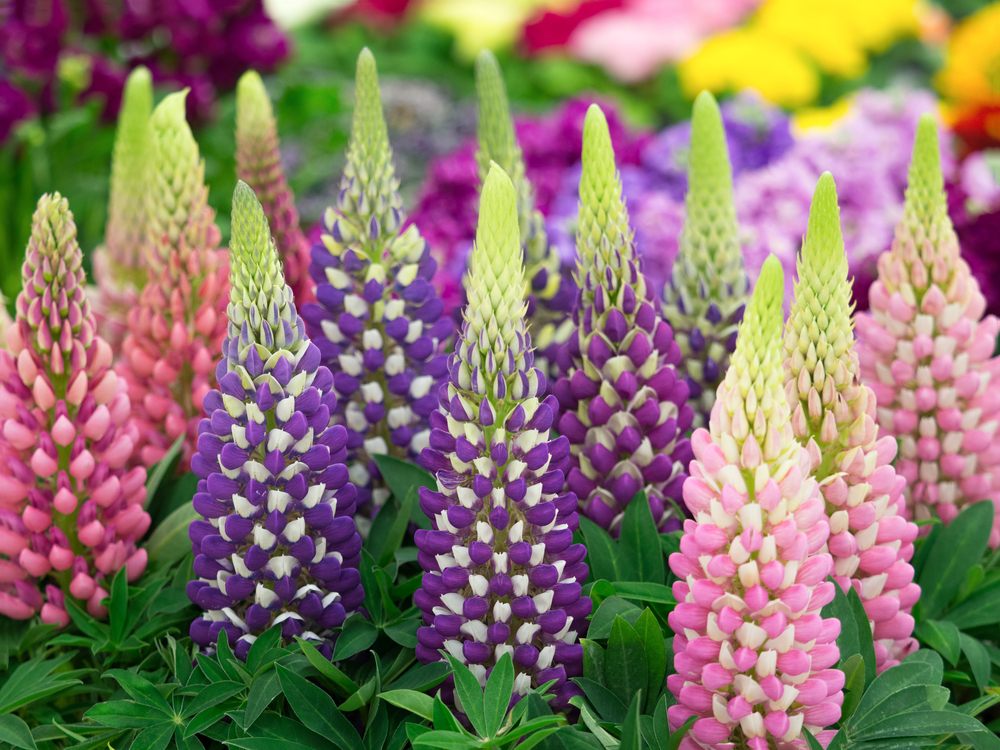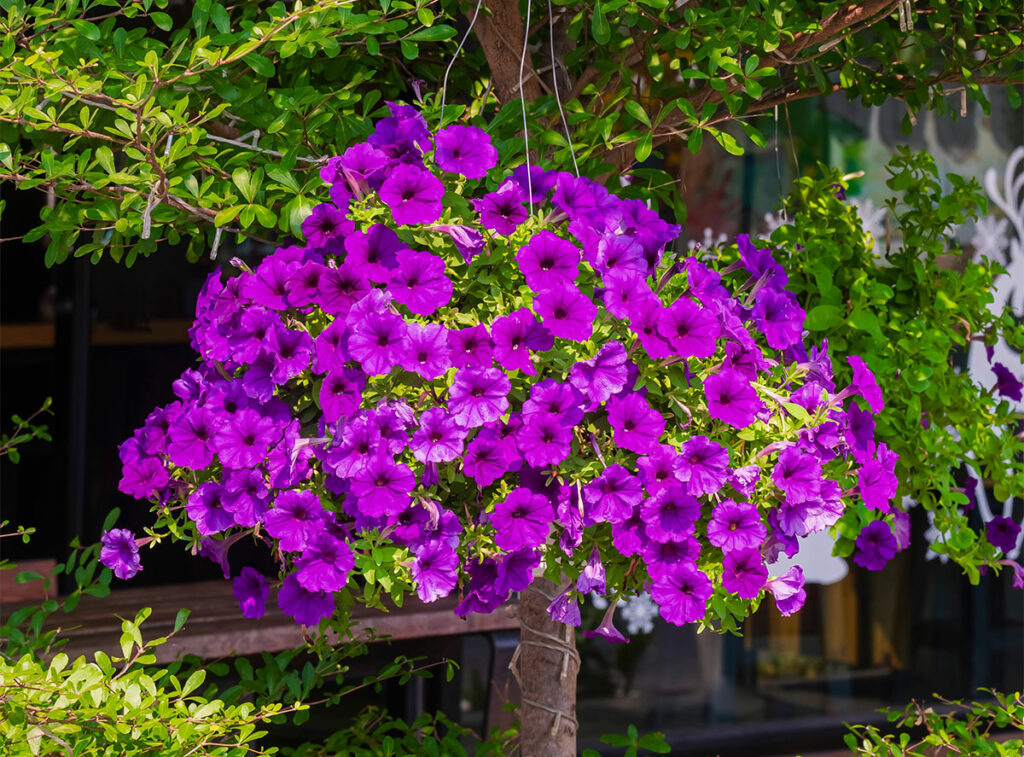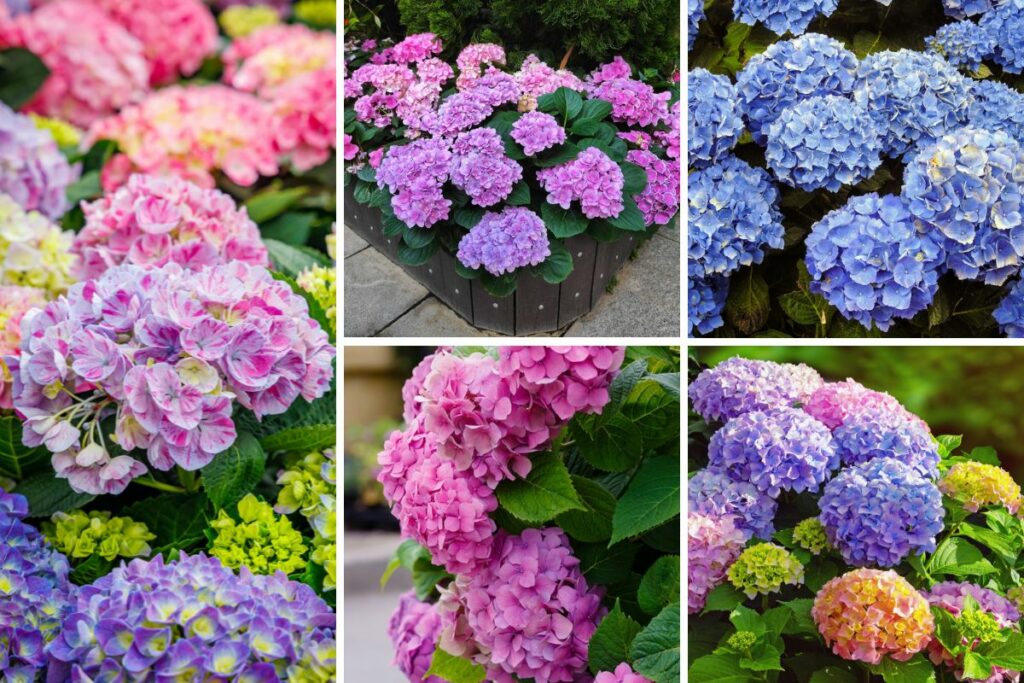
Hydrangeas are incredibly popular garden plants, known for their large, showy blooms that come in a variety of stunning colors. Ensuring the health and beauty of these plants requires regular maintenance, including knowing when to cut them back.
Cutting back hydrangeas at the right time helps promote new growth and abundant flowering in the following season.
There are several types of hydrangeas, and each variety has its own specific growth cycle and pruning needs. Some hydrangea species bloom on old wood, while others bloom on new wood.
Knowing the difference between these types is crucial in determining the ideal time for cutting back your hydrangeas.
Investing time in understanding your hydrangeas’ growth cycle can result in a healthier, more productive plant with striking blooms.
Key Takeaways
- Timing is important when cutting back hydrangeas for optimal growth and blooms.
- Know the difference between hydrangeas that bloom on old wood vs. new wood.
- Properly maintain and care for your hydrangeas after cutting back to ensure plant health.
Understanding Hydrangea Growth Cycle
Identifying Hydrangea Species
To properly care for your hydrangeas, it’s essential to first identify the species you are dealing with. There are four main types of hydrangeas:
- Bigleaf hydrangeas (Hydrangea macrophylla): These are the most common species, known for their large, colorful blooms. They include mophead and lacecap varieties.
- Panicle hydrangeas (Hydrangea paniculata): Their cone-shaped flower clusters give them a unique appearance, and they generally have white or greenish blooms.
- Smooth hydrangeas (Hydrangea arborescens): These hydrangeas have round, white flowers, and they are known for their hardiness.
- Oakleaf hydrangeas (Hydrangea quercifolia): As the name suggests, these hydrangeas have leaves that resemble those of an oak tree. Their blooms are also cone-shaped, like the panicle hydrangeas.
Understanding the Bloom Cycle
Understanding the bloom cycle of your hydrangea species is crucial for knowing when to cut back the plant. Hydrangeas generally fall into one of two categories based on their blooming habits:
- Old wood bloomers: These hydrangeas produce flowers on the previous year’s growth, called old wood. Bigleaf and oakleaf hydrangeas fall into this category. To avoid harming the blooming process, you should prune these plants shortly after their flowers have faded, usually in late summer or early fall.
- New wood bloomers: These hydrangeas bloom on the current year’s growth, called new wood. Panicle and smooth hydrangeas fall under this category. Since they produce flowers on new growth, it is safe to prune them in late winter or early spring, before new growth begins.
Now that you have a better understanding of the hydrangea growth cycle, you can confidently make decisions about when to cut back your plants for optimal health and beautiful blooms. Remember, proper timing and care will ensure that your hydrangeas continue to flourish year after year.
Ideal Times to Cut Back Hydrangeas

Everyone loves their hydrangeas in full bloom, but providing proper care maintains their beauty year-round. Pruning at the right time can greatly impact your hydrangea’s growth and blooms. There are two main times to cut back your hydrangeas- fall and spring.
Fall Cut Back
When hydrangeas bid farewell to summer, it’s time for you to cut back the spent blooms. This should be done right after they finish flowering, usually around September or October. To promote stronger growth, remove any weak or damaged branches as well, cutting them back to the healthy portion of the plant.
Keep a few things in mind while pruning:
- Always use clean and sharp tools to avoid infecting or damaging your plant.
- Make sure you cut at an angle for better healing and water runoff.
- Leave some healthy buds for the plant to grow in the coming season.
Spring Cut Back
For those who missed the fall pruning or prefer spring maintenance, March is an excellent time for cutting back hydrangeas. Before the new growth appears, remove dead wood, broken branches, and any thin or crossed stems.
Here are some tips for spring pruning:
- Look for buds swelling on the branches, as this is a sign of new growth.
- Use proper pruning techniques to keep your plant healthy.
- Mulch around the base of the plant to help with moisture retention and weed control.
Whichever season you choose, your hydrangeas will benefit from consistent care. Proper pruning not only helps maintain the plant’s overall health but also leads to heartier blooms for you to enjoy.
Factors Impacting Cutting Time
Climate
The climate in your area plays a crucial part in determining when to cut back your hydrangeas. Warmer regions usually benefit from pruning earlier, around late winter or early spring, before new growth emerges. In colder regions, it’s advisable to wait until the fear of frost has passed, which usually occurs in mid-to-late spring.
Keep an eye on local weather patterns and know the lowest and highest temperatures in your region, as these could impact your plant’s ability to recover after pruning. Remember, timing is key for your hydrangeas to maintain optimal growth and blooming.
Plant Health
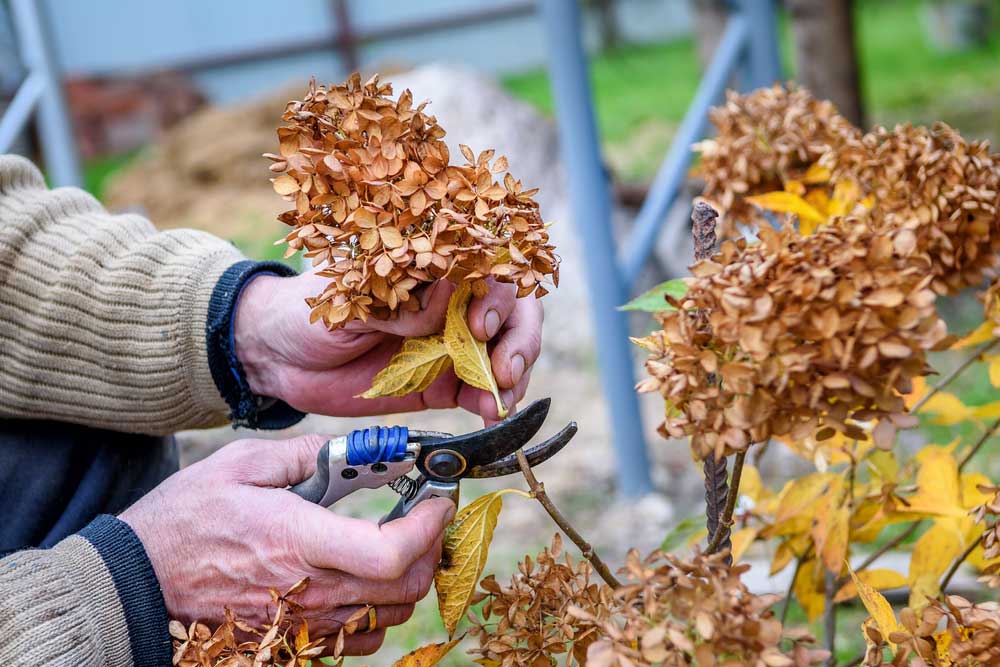
Examining your hydrangeas’ health is essential when deciding when to cut them back. Look out for these indicators:
- Healthy plants: If your hydrangeas look robust and have plenty of blooms, you can trim them after the flowers have faded, ideally in late summer or early autumn. This gives the plant sufficient time to recover before winter.
- Weak or damaged plants: If you notice that your hydrangeas have dead or damaged branches, prune them immediately, regardless of the season. Removing these branches improves plant health and circulation.
- Sparse blooms: If your hydrangeas have few blooms, consider cutting back the plant in late winter or early spring to encourage new growth and flowering.
By considering these factors and properly timing your cutting, you’ll help your hydrangeas thrive and look their best throughout the year.
How to Cut Back Hydrangeas
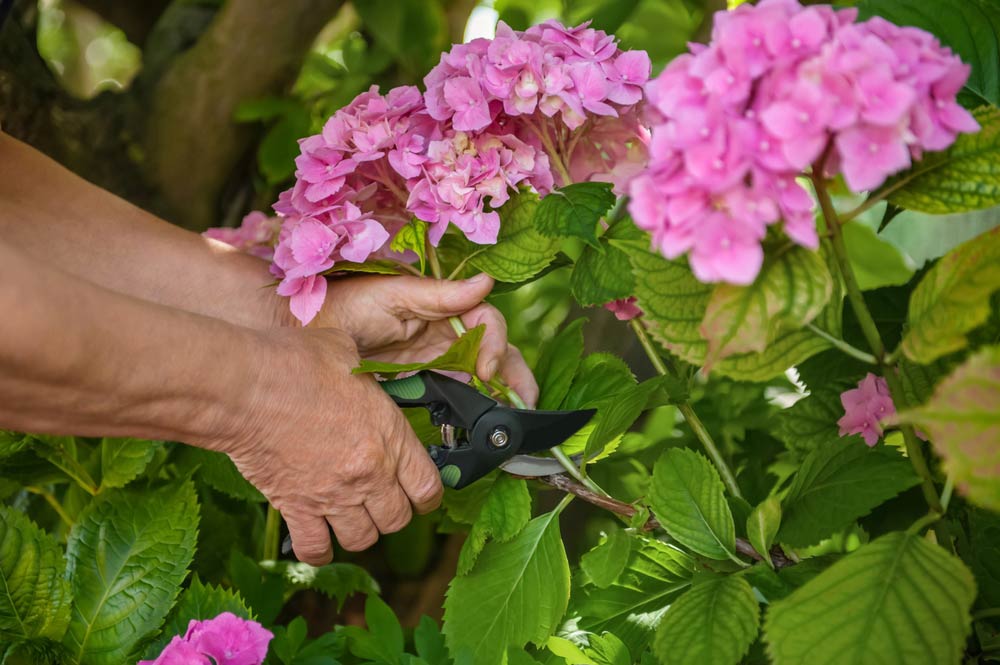
Material Preparation
Before starting, gather all tools and materials necessary, including:
- Pruning shears
- Garden gloves
- A tarp or container for collecting clippings
To ensure a smooth and effective cutting process, it’s vital to clean and sharpen your pruning shears beforehand. Wearing garden gloves will protect your hands from potential injuries.
Cutting Technique
Follow these simple steps to properly cut back your hydrangeas:
- Identify the type of hydrangea. Different types of hydrangeas require different pruning techniques. Common varieties include mophead, lacecap, and panicle hydrangeas.
- Inspect your hydrangea. Look for dead, damaged, or diseased branches that need immediate removal. These branches should be your first priority.
- Timing is key. For most hydrangea varieties, the best time to cut back is in late winter or early spring. However, it’s best to know the specific pruning requirements of your hydrangea type.
- Prune cautiously. Cut back only one-third of the stems at a time to encourage healthy growth and avoid damaging the plant. When cutting, make clean, angled cuts about 1/4 inch above the next healthy bud or set of leaves.
- Remove spent blooms. If your hydrangea has finished blooming for the season, remove the old flower heads to encourage new blooms.
Following these steps will maintain the health and beauty of your hydrangeas. Remember to always use the right tools and cutting techniques to ensure the best results.
Post-Cutting Care
After you’ve cut back your hydrangeas, it’s essential to provide them with proper care to ensure healthy growth. To start, make sure to water the plants thoroughly.
Hydrangeas require consistent moisture, so check the soil often and water whenever it feels dry.
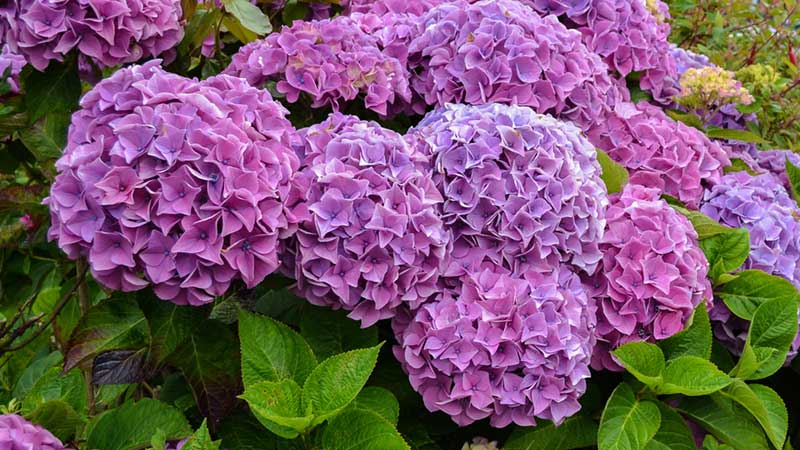
Next, it’s crucial to apply a layer of mulch around the base of the plant. Mulch helps retain moisture, regulate soil temperature, and suppress weed growth. Use organic materials such as:
- Wood chips
- Pine bark
- Straw
- Leaves
When it comes to fertilization, moderation is key. Over-fertilizing can lead to an abundance of foliage at the expense of blooms. Use a slow-release, balanced fertilizer (preferably one formulated for hydrangeas) and follow the package instructions for application rates.
Another essential aspect of post-cutting care is pest and disease management. Hydrangeas can be susceptible to issues such as powdery mildew, rust, and aphids. Regularly inspect your plants and address any signs of problems promptly. You can use eco-friendly solutions such as:
- Neem oil
- Insecticidal soap
- Pruning infected areas
Lastly, remember that sunlight is crucial for blooming. Ensure that your hydrangeas receive enough light – at least 4–6 hours of dappled sunlight daily. If your garden offers limited sunlight, consider relocating your plants.
By following these post-cutting care tips, you can ensure your hydrangeas recover well and provide you with beautiful blooms in the future.

